Click to Skip Ahead
A constipated kitty is no fun. Usually, constipation is not a sign of something serious, though it can be very uncomfortable for the cat and can lead to secondary problems if it isn’t addressed. However, constipation can be a sign of some health problems.
Unless you’re paying attention to your cat’s bowel movements, it can be challenging to figure out they’re constipated. Luckily, most cat owners scoop out the litter box regularly and will notice something is wrong based on the box’s contents.
If you’re concerned that your cat is constipated, you’ve come to the right place. We’ll discuss how to make a cat poop when constipated with various different methods and discuss the underlying causes of constipation.

What Counts as Constipated Cat Poop?
Under normal circumstances, a cat should poop at least once every 24 hours. If you scoop out the litter box every day or two, there should be poop in it every time. There are some situations where a cat may poop less, though. For example, a sick cat that isn’t eating very well will probably not poop as much. If you know your cat is sick and feels under the weather, it may not be entirely unusual for them to poop less.
If your cat has gone 48 to 72 hours without a bowel movement, you need to contact your vet. While constipation is usually caused by something minor, like not getting enough fiber, other serious health problems can also be the cause.
- More than 48 hours without pooping
- Dry, hard stools
- Accidents outside of the litter box
- Unproductive straining
- Discomfort when using the litter box
- Avoidance of the litter box
If you notice that your cat is constipated, keep an eye out for other signs. Constipation can sometimes indicate something more serious.
- Decreased appetite
- Vomiting
- Abdominal pain
- Less activity
- Fewer interactions
- Abdominal distension
- Anorexia (not eating)
- Fever or hyperthermia
- Lower body temperature or hypothermia
- Refusing to lay down
- Inability to pee
If you notice any of these signs, take note and contact your vet immediately.
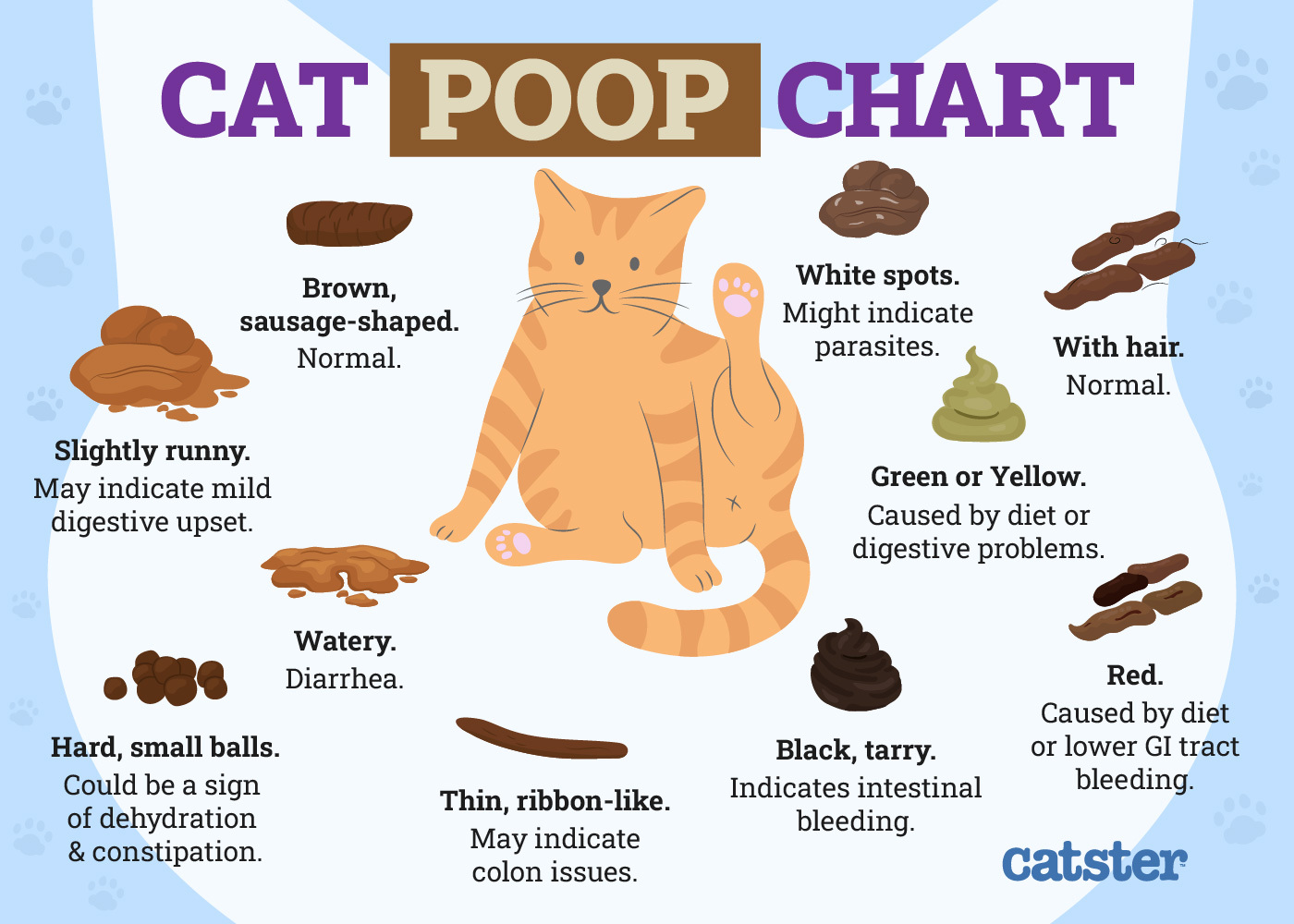

Causes of Constipation in Cats
While constipation can be treated by itself, it is sometimes caused by an underlying issue. This underlying problem may be something minor, but it can also be a severe health condition. Until the cause is treated, constipation will often recur. It is vital to figure out the actual cause of the constipation, as you don’t want to ignore a serious, underlying illness unknowingly.
Many diseases that cause dehydration can further lead to constipation. Without enough water in their system, cats can have difficulty having a bowel movement. There are tons of reasons your cat may be dehydrated. New medication and lifestyle changes can cause dehydration, as can more severe problems.
Cats eating dry cat food are more likely to be dehydrated and maybe predisposed to constipation for this reason.
Constipation can also happen whenever the bowels aren’t moving correctly for whatever reason. For example, stress, inflammatory bowel disease, allergies, nerve problems, and even some cancers can affect the bowels’ movement.
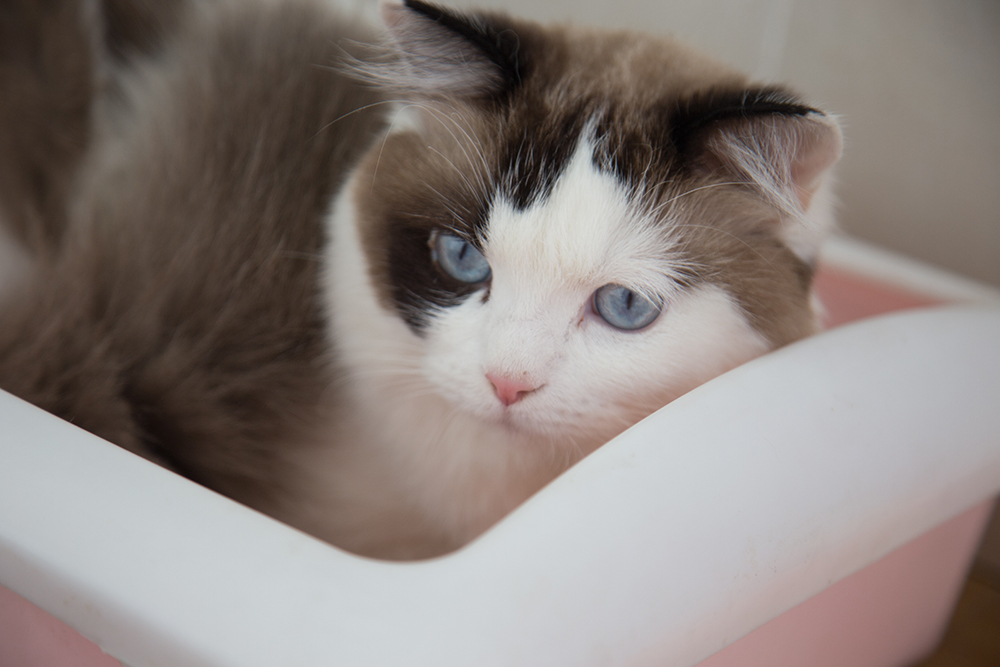
Some chronic diseases can also result in constipation. For instance, kidney diseases, diabetes, and hypothyroidism can all cause constipation. It could also develop after a successful treatment of hyperthyroidism.1 Some physical injuries can cause constipation as well, including any damage to the nerves that control the intestinal movements or the anal sacs.
Some cats may purposefully not poop for one reason or another. This can be the result of stress. Pain from arthritis or anal gland issues can also make a cat refuse to use the litter box, resulting in constipation. Cancers can cause pain as well, even if they don’t directly affect the bowels.
It is tough to diagnose constipation in cats at home. You will need a vet’s help. We highly recommend giving your vet a call if your cat is constipated. In the meantime, there are some things you can do to provide relief.

The 10 Tips on How to Make a Cat Poop When Constipated
1. Increase Hydration
Constipation is usually caused by dehydration. Therefore, an easy and straightforward way to reduce constipation is to rehydrate your feline. You should ensure that fresh water is available at all times. You may need to get a giant water bowl if your cat keeps running out before you can refill it.
The type of water bowl you use may also matter. For example, you may want to go with a wide bowl, as some cats don’t like their whiskers to touch the side of the bowl when they drink. Certain materials can make the water taste weird. The best materials are usually metal or ceramic. Some cats love running water. Luckily, there are cat water fountains available that work as drinking bowls.
You should place the water bowl away from the food and litter box. Both food and litter can easily make water dirty, which will discourage a cat from drinking.
Depending on your house size, you may want to consider getting more than one water bowl. Just like people, cats tend to drink more water if it is readily available.
In severe cases, you can also use commercial water flavorings that are designed for cats. These are best for cats with health problems that need to increase their water intake significantly. However, they can be suitable for cats with chronic constipation as well. Be sure to always leave a plain water source option, just in case they don’t like the flavorings.
Cats can be very particular about many things, including the water they drink. The right water fountain can provide your cat with clean, fresh water.
We recommend Hepper's Stainless Steel Cat Water Fountain, an easy-to-clean model with three different flow modes, a large capacity, and effective triple filtration. This minimalist fountain runs quietly and will fit right into your home. At Catster, we’ve admired Hepper for many years and decided to take a controlling ownership interest so that we could benefit from the outstanding designs of this cool cat company!
2. Switch to Moisture-Rich Food
The easiest way to increase a cat’s water intake is to switch to moisture-rich food. In many cases, fresh or wet food is the healthiest option for cats with constipation, as it ensures they’re getting a certain amount of water every day, whether they drink it or not.
Most cats switch to wet food readily, as it smells and tastes better than dry food. However, some cats may be a bit picky if they’ve never had it. Either way, you should switch to the new food slowly, as suddenly switching can lead to digestive problems, which is the last thing you want when your cat is already having issues.
Even if you don’t wholly switch your cat to wet food right away, even a little bit of added moisture can go a long way. It may jump-start your cat’s thirst, which can encourage them to drink extra.
If your cat already eats wet food, you can increase their liquid intake by adding broth or water to their food. You can also choose a wet food containing more moisture, such as one with added gravy or broth. However, if you’re already feeding your cat wet food, it is not likely that they are dehydrated to begin with.
3. Change Their Diet
This goes hand-in-hand with the previous method. However, there is more to choosing good food for your feline than just switching to wet food. Even if your cat is currently eating wet food, you may want to switch it.
Food allergies are relatively common in cats, but they are under-diagnosed. For this reason, you may need to switch your cat’s diet to avoid allergies. Cats can only become allergic to the protein in their food. Therefore, if they’re eating chicken, consider switching them to food without chicken.
If you’re already switching your feline to wet food, it is easy to choose a food with a different protein source only. If your cat is already eating wet food, you may want to consider changing the flavor or recipe.
In general, we recommend switching foods often, anyway. It provides a more diverse, complete diet for your feline and may help prevent food allergies.
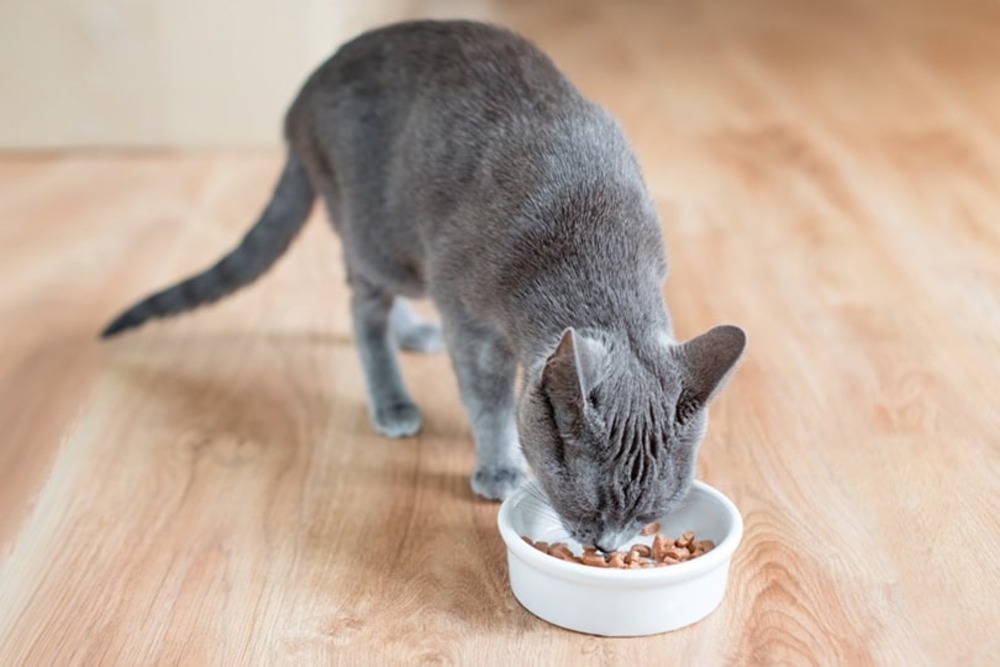
4. Help Your Cat Maintain a Healthy Weight
A side effect of obesity can be constipation, as it causes a chronic inflammatory state. When they are inflamed, the bowels may not work correctly, which can cause constipation and other problems. If your cat is obese or overweight, work with your vet to bring your cat’s weight down to a healthy level. This can be done with the use of weight management food and exercise. You may also need to limit the amount of food your cat eats if you aren’t already.
Encouraging a cat to exercise is not as straightforward as taking a dog for a walk. However, increasing the amount of play and climbing available is an excellent place to start. You can also train a cat to walk on a leash, which can be a good weight-loss strategy.
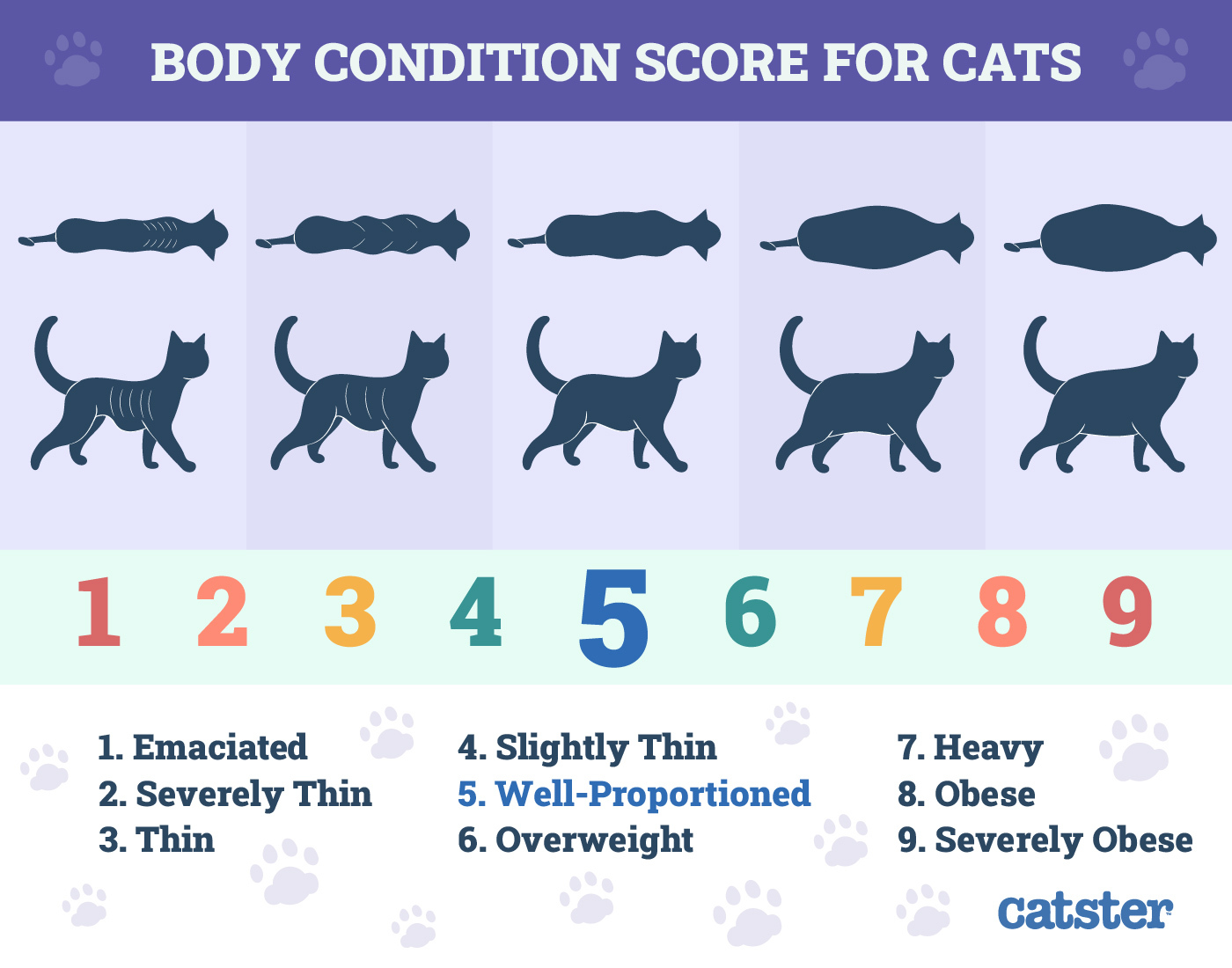
5. Decrease Stress
Stressed cats may become constipated. There are many reasons your cat may become anxious and stressed. Some are very obvious, like bringing a new cat into the home or moving. However, even slight disruptions to normal can cause stress and anxiety. For instance, if you’ve recently switched jobs, the schedule change can stress your cat out until they become used to the new routine.
Often, you may need to wait your cat out. They will become used to the new normal eventually. However, you can make your cat more comfortable in the meantime. When possible, ease into the new changes to reduce your cat’s anxiety. You can also use products like calming cat pheromones and supplements.
If your cat has other signs of extreme stress, your vet may recommend medications. These include hiding, inappropriate urination, a change in appetite, obsessive grooming, and excessive meowing.
Those caring for anxious cats understand the struggles and discomfort that their companions feel on a daily basis. The innovative bowl shape of the Hepper Nest Bed provides nervous pets with support and its high sides offer a sense of security, diminishing stress and worry. To learn about how to the Hepper Nest can provide solace to your cat, click here.
At Catster, we’ve admired Hepper for many years and decided to take a controlling ownership interest so that we could benefit from the outstanding designs of this cool cat company!
6. Increase Their Fiber Intake
In some situations, your feline may need to increase their fiber intake to higher levels. Fiber is essential to a healthy gut biome. The good bacteria in your cat’s intestines eat fiber and rely on it to thrive. If your cat’s gut biome is not in good shape, they can become constipated. While cat foods should technically contain enough fiber, this isn’t always the case. Some cats need more fiber than others and may benefit from a high-fiber food.
There are also different types of fiber. Some types may work better than others. If your cat is commonly constipated, consider switching their food to something that contains more fiber or a different kind of fiber. In some cases, adding cat grass to your cat’s environment will give them access to a natural source of fiber.
However, if your cat’s diet already contains plenty of fiber, this method probably won’t help.
7. Add More Litter Boxes
Some cats are pretty picky about their litter boxes. They may only use a litter box once before refusing to use it. If you don’t scoop it out, this can lead to constipation. This is especially true if you have multiple cats. Some cats will not use a litter box that another cat has used.
The easiest thing, in this case, is to purchase more litter boxes. This will make all of them cleaner, which will encourage your cat to use them. Plus, more litter boxes will be available at any one time.
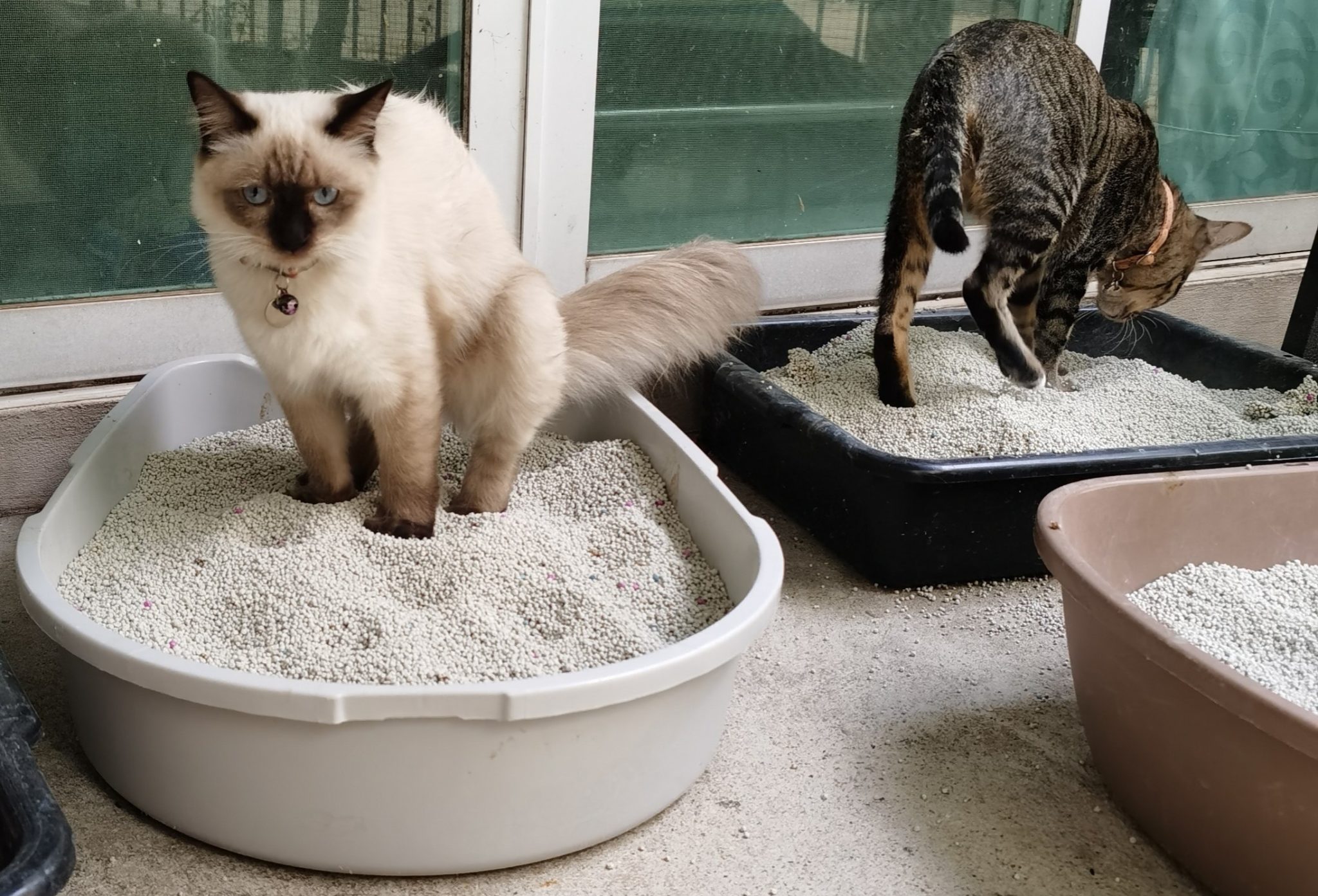
8. Exercise
Like people, increased exercise can help with bowel movements. Your feline needs to move around regularly. It helps them stay healthy and avoid problems like constipation. If your cat isn’t getting enough exercise, it is also likely that they are also overweight, which can also cause obesity. It’s a double-edged sword.
Some cats are active all the time, as you probably know. However, others need a bit of encouragement. Some may need more encouragement than others. Often, many cats will become more active with a few new toys and some attention from you. However, others require profound encouragement. They may need more climbing structures or to be leash-trained and guided around an obstacle course with their food.
While some cats have no trouble getting in their daily dose of exercise via the zoomies, others require a bit more encouragement to get active. The innovative Hepper Hi-Lo Cat Scratcher offers a 3-position design that provides cats with a variety of levels to play on, each engaging their full body and muscles. The durable cardboard scratching pad is an enticing cat-friendly place to climb, stretch, and claw, fulfilling their instinctual need to scratch.
If you are looking to improve your cat's health and increase their energy, check out the Hepper Hi-Lo Cat Scratcher. At Catster, we’ve admired Hepper for many years, and decided to take a controlling ownership interest, so that we could benefit from the outstanding designs of this cool cat company!
9. Consider Laxatives
After speaking to your vet and trying other methods, you may be recommended a laxative. There are many different types of laxatives that work in many different ways. One of the most common (and safest) medications works by pulling more water into the intestines. This makes the stool easier to pass. However, this only works if your cat is drinking enough water. Otherwise, it might not work at all or can even cause dehydration.
This sort of medication can also be dangerous for those with certain health conditions. If your cat already has trouble with water regulation, giving them something that requires water can lead to issues. This is why it is essential to talk to your vet.
Certain laxatives are oil or grease based. However, these can affect your cat’s ability to absorb nutrients from their food, so you should only use them when it is essential. They should always be used under the direction of a vet, as they can cause nutritional problems quickly if something goes wrong.
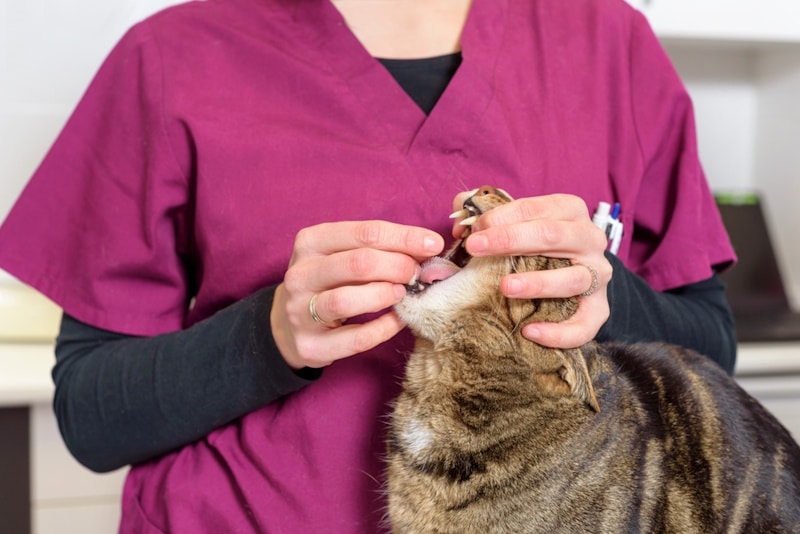
10. See the Vet
We know this probably isn’t what you want to hear. However, sometimes, it is necessary to take your cat to the vet. Often, one of these methods will work and may reduce your cat’s constipation for a time. However, if there is a severe underlying condition, constipation will reoccur. This is a sign that something may be wrong and requires a vet visit.
For most medical conditions, time is of the essence. You will need to treat your cat quickly before the condition worsens, so it is best to err on the safe side. Constipation may seem minor—and it is. The problem is what is causing constipation, which might be something quite serious.
All cats may get stressed at some point, which can cause constipation. Some cats may merely not be drinking enough. Constipation isn’t always a sign of something serious.
If you are wondering how to help a cat poop, your vet will have a few different treatment options. They will typically focus on treating actual constipation first, even if it is a sign of something else. Constipation can result in permanent damage to the colon. Many vets will use an enema, which will help the cat pass the stool. This is a vet job and should not be attempted at home.
Vets can also prescribe medications like prokinetic drugs to help your cat’s intestines recover their motility. Depending on your cat’s other signs, your vet may request to perform a variety of diagnostic tests, including blood and urine tests, X-rays, ultrasounds, or even colonoscopies.
Visiting your vet may take time and money, but it is often the only way to treat recurring constipation. It is merely impossible to know what is causing your cat’s problem without running tests, which only your vet can do.
After analyzing the diagnostic test results, your vet will recommend the best course of action to treat your cat’s case.

Conclusion
Constipation is usually not severe by itself. However, it can cause issues if it goes on for too long. It can also indicate a more serious issue. It is essential to treat constipation directly, as well as the underlying cause. Often, a vet is required for this purpose.
However, for cats whose constipation is caused by dehydration, it may be fixed by switching their food and increasing their water intake. Food allergies can also be treated by switching your feline’s food, though you may need a vet’s help to treat constipation quickly. It can take a bit for allergens to get out of your pet’s system.
In any case, knowing your cat’s toilet habits well and making the necessary adjustments is the best way to keep a constipation case from worsening.
Featured Image Credit: RJ22, Shutterstock

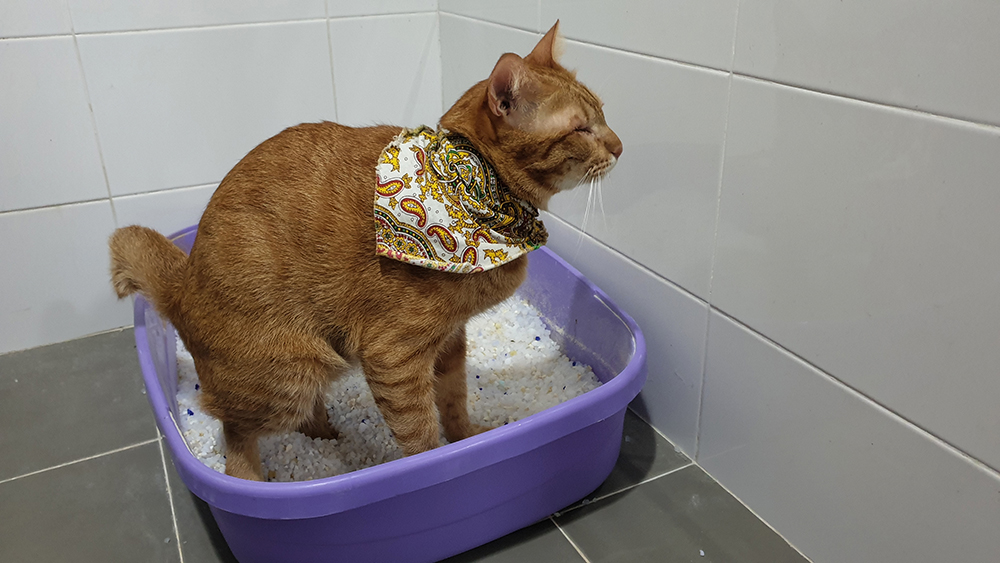
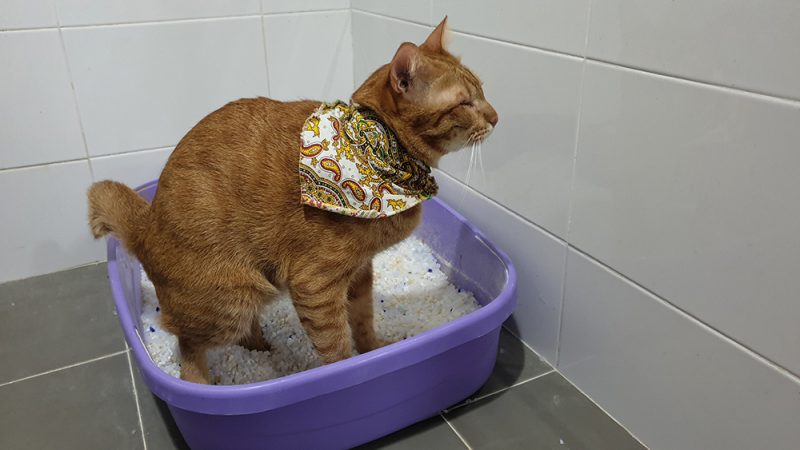











My cat hasn't pooped in a couple day's I don't have any wet cat food, can I give her a little wet dog food
Hi Kathleen,
While a small amount of wet dog food isn’t likely to hurt your cat, it is also unlikely to do anything to help with your cat’s constipation, so it’s better to keep it away. If irregular bowel motions are uncommon for your cat, then it’s important you get him checked out by a vet. We have a really easy-to-use online veterinary service, PangoVet (https://pangovet.com). , where you can get speak to a vet online in a 1-to-1, get answers to your questions and help with making a plan to keep your cat regular and healthy. Hope this helps!